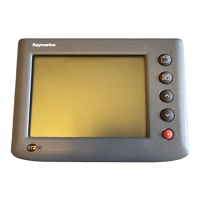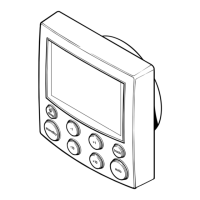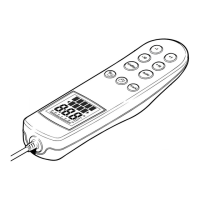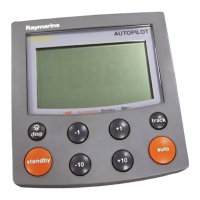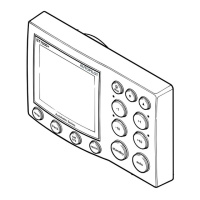92 ST4000 Plus Wheel & Tiller Autopilots Owner’s Handbook
9. Press and hold st a ndby for 2 seconds to exit calibration and save
the new settings.
Note: Setup options are always saved on exit.
Fur t her he adi ng al i gnment a djust ment
You should always check the compass alignment after swinging the
compass. However, once the initial deviation correction procedure has
been performed, you can make adjustments to the alignment as often as
you wish, without swinging the compass again.
Although the compass deviation correction procedure removes most of
the alignment error, you will probably be left with small errors (of the
order of a few degrees) that will vary depending on the heading.
Ideally, you should check the heading reading against a number of
known headings, plot a deviation curve, and determine the heading
alignment value that will give the lowest average alignment error. This
value can then be entered on the Heading Alignment screen, as
described above.
If the average heading error is more than 5∞, you should perform the
compass deviation correction procedure again, circling slower and in
move favourable conditions.
Che ck i n g a ut o p i l o t op e r a t i o n
Having calibrated the compass the following proceedure is
recommended to familiarise yourself with autopilot operation:
1. Steer onto a compass heading and hold the course steady.
2. Wheel Pilot: Engage the wheel drive clutch by rotating the wheel
drive clutch lever clockwise.
Tiller Pilot: Place the actuator over the tiller pin. If necessary,
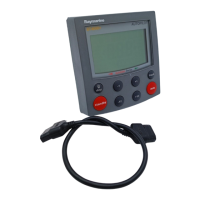
